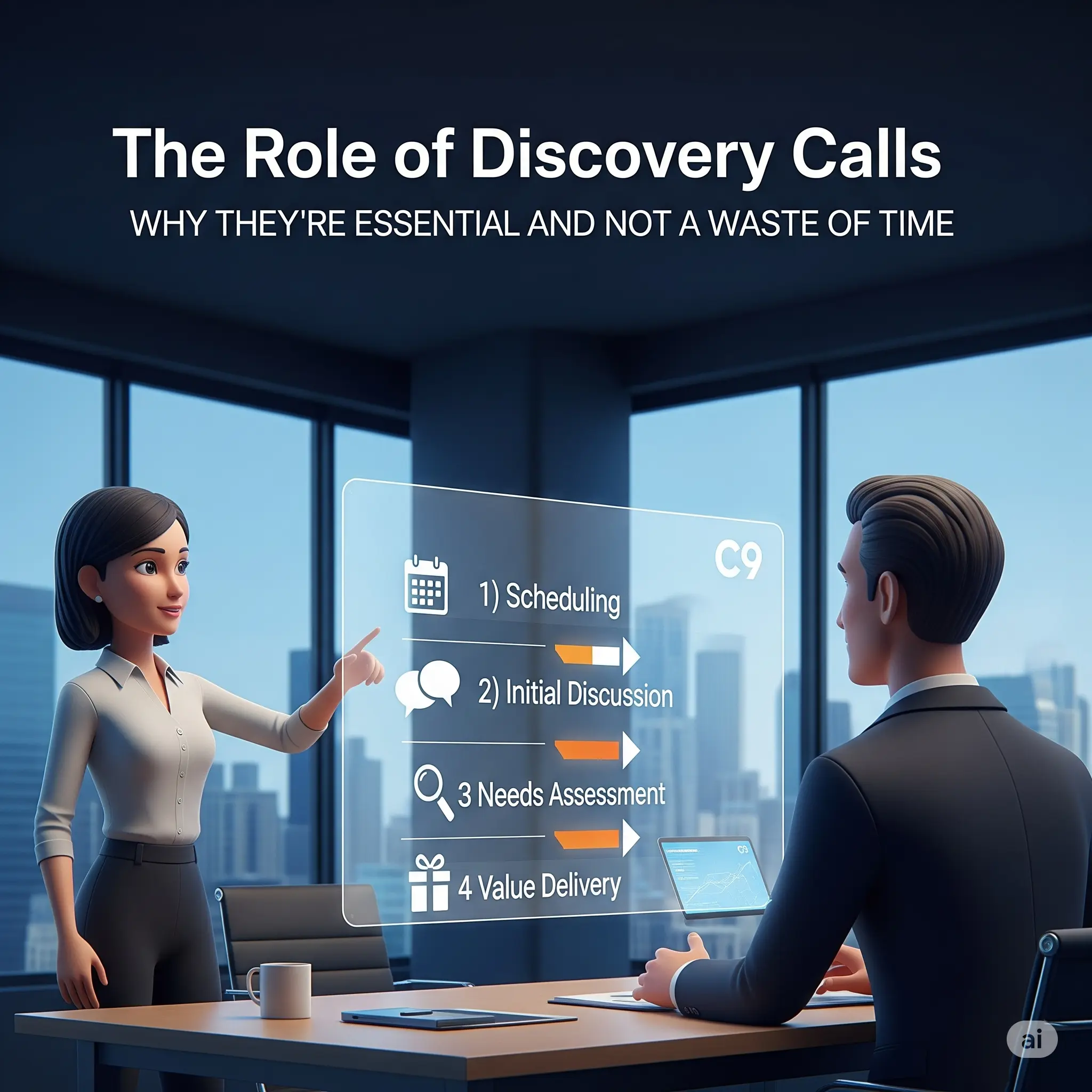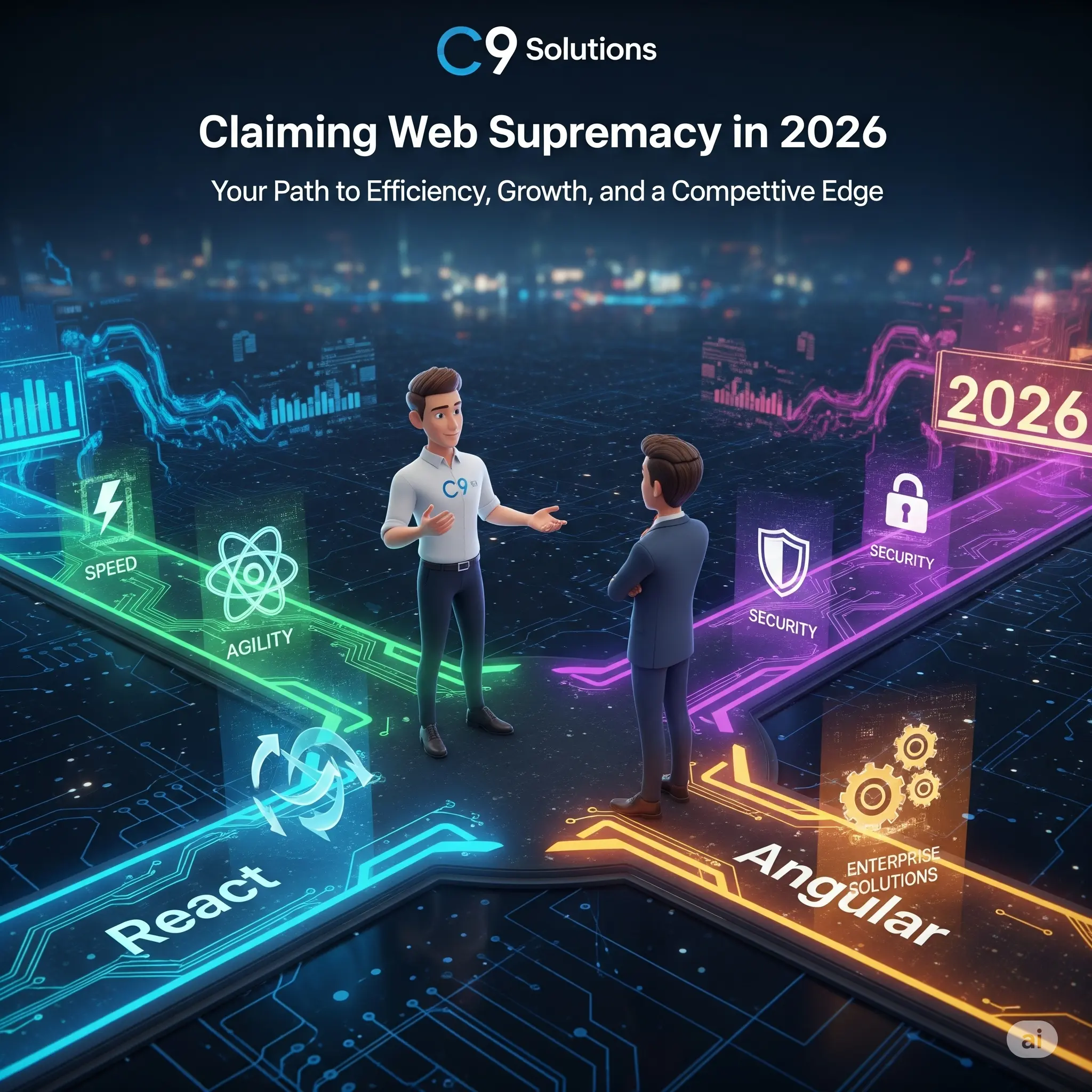As a forward-thinking Australian business executive, you're no stranger to the relentless pressure of outdated systems stifling growth—missing revenue targets, ballooning costs from inefficient workflows, and watching competitors leap ahead with cutting-edge tech. In the fast-evolving world of web development, choosing the right framework isn't just a technical decision; it's a strategic move that can streamline operations, enhance customer experiences, and unlock competitive advantages. At C9, Australia's leading custom software, apps, integration, and database developer, we specialise in tailoring solutions that address these exact pain points, turning legacy frustrations into innovative triumphs.
Enter the 2026 showdown between Angular and React—two titans battling for dominance in web supremacy. As projections indicate the web development market soaring to $70.70 billion by 2026, this clash will define how businesses like yours build scalable, high-performing web apps. Will Angular's structured framework reign supreme for enterprise-scale needs, or will React's flexible library continue its reign for agile, dynamic interfaces? In this blog, we'll dissect the trends, compare their strengths, and guide you toward the choice that propels your goals: boosting efficiency, slashing costs, and driving profits. Let's dive in and empower your decision-making with insights from C9's collaborative expertise.
The Current Landscape – Why Angular and React Matter Now

Today’s digital marketplace is unforgiving. Many Australian organisations are shackled by legacy systems that deliver poor user experiences, incur high maintenance costs, and fail to integrate with modern, data-driven tools. This technological drag is a direct threat to your bottom line. At the forefront of the solution are two clear leaders: Angular, Google's all-in-one framework, and React, Meta’s agile and lightweight library. Backed by global tech giants, massive developer communities, and proven track records, they represent the future of web applications.
The challenge is that outdated frameworks often directly contribute to high operational costs and missed growth opportunities. This technology showdown is a pivotal moment, offering a chance to innovate and realign your digital strategy for success.
Here are the key trends defining their current roles:
-
React’s Dominance in Speed and Flexibility: Its gentler learning curve and component-based structure make it ideal for getting to market quickly with dynamic, user-centric applications.
-
Angular’s Enterprise Edge: Its comprehensive toolset and use of TypeScript (a version of JavaScript that helps prevent errors) make it a fortress for large-scale applications where security and structure are non-negotiable.
Here’s a quick comparison for the analytical mind:
| Feature |
Angular (Google) |
React (Meta/Facebook) |
| Type |
Comprehensive Framework |
Flexible Library |
| Data Flow |
Two-Way Data Binding |
One-Way Data Binding |
| Best For |
Large, complex enterprise apps (CRMs, ERPs) |
Dynamic, high-performance UIs (e-commerce, dashboards) |
| Key Advantage |
All-in-one, structured, and highly scalable |
Fast, flexible, and a massive community |
Predicting the 2026 Battleground – Emerging Trends and Evolutions

Looking ahead to 2026, the battleground will be shaped by emerging demands for AI integration, hybrid applications, and Progressive Web Apps (PWAs). Your choice today needs to account for tomorrow's innovations.
-
React's Trajectory: With enhancements like server-side rendering and its seamless path to mobile apps via React Native, React is perfectly positioned for the convergence of web and mobile. Its lightweight nature and vast ecosystem of tools make it the frontrunner for businesses needing to iterate quickly and cost-effectively to meet changing customer expectations.
-
Angular's Advancements: Angular is doubling down on enterprise needs. Its focus on reactive programming and improved scalability makes it the definitive choice for secure, mission-critical applications. For businesses needing flawless integration with complex databases and backend systems, Angular is engineered to reduce long-term maintenance costs and technical debt.
Other trends will also influence the decision. The rise of micro-frontends (building a single application from independent parts) and a focus on code sustainability favour React’s lighter footprint (around 300 KB) over Angular's more substantial build.
For example, an Australian e-commerce platform aiming to maximise conversions and revenue will benefit from React's speed and agility. Conversely, a national logistics company needing a complex internal system to improve operational efficiency will find Angular's robust structure a more reliable long-term investment. At C9, our innovative approach is to help you navigate these trends without needing a large in-house technical team.
Pros, Cons, and Business Impact – Which Framework Aligns with Your Goals?
Let’s distil this showdown into a balanced analysis geared towards the driven executive focused on tangible outcomes.
React: The Agile Innovator
-
Pros: Unmatched flexibility for custom user interfaces, a massive developer community for rapid problem-solving, and a lower learning curve which can reduce development time and initial costs.
-
Cons: Its flexibility means it relies on third-party libraries for many functions (like routing), which can add complexity if not managed by an experienced team.
Angular: The Enterprise Powerhouse
-
Pros: An all-in-one solution with built-in tools for nearly every need, making it ideal for creating highly maintainable and scalable applications that solve legacy system challenges.
-
Cons: The steeper learning curve and larger size can lead to a slightly slower initial setup and deployment time compared to React.
The business impact of this choice is significant. Choosing a framework that doesn't align with your goals can inflate project costs by 20-30% through reworks and extended timelines. The right fit, however, can be a catalyst for efficiency, revenue growth, and a superior customer experience. C9 is the trustworthy partner that can tailor either framework to your unique business DNA, helping you overcome barriers like disappointing past experiences with other vendors.
The Role of Discovery Calls – Why They're Essential and Not a Waste of Time

In the midst of this tech showdown, one critical step often overlooked is the discovery call—a collaborative conversation that uncovers your specific pain points and aligns solutions like Angular or React to your goals. Skipping it is a bad idea because it leads to mismatched implementations: generic advice that ignores your high operational costs or outdated systems, resulting in wasted investments, prolonged inefficiencies, and amplified employee resistance. Without it, you're gambling on assumptions, potentially exacerbating poor customer experiences and missing competitive edges.
Why are discovery calls important? They build trust by demonstrating our innovative expertise, ensuring tailored recommendations that drive profitability and efficiency. At C9, we view them as investments in your success, not obligations—revealing hidden opportunities like seamless integrations that eliminate data silos.
Here's a simple breakdown of how a C9 discovery call works, proving it's far from a waste of time:
-
Scheduling (5-10 minutes): You book a convenient slot via our website or email—no pressure, just a quick setup to fit your busy executive schedule.
-
Initial Discussion (15-20 minutes): We listen to your triggers—missing targets, legacy frustrations—and ask targeted questions to understand your operations, goals, and barriers like cost concerns or lack of expertise.
-
Needs Assessment (10-15 minutes): Collaboratively map out challenges, such as integrating web apps with databases, and explore how Angular's structure or React's agility could address them.
-
Value Delivery (5-10 minutes): Share preliminary insights, like trend projections for 2026, and outline next steps without commitment—empowering you with actionable knowledge immediately.
-
Follow-Up: We provide a summary report, ensuring transparency and building desire for a partnership that outpaces competitors.
In under an hour, you'll gain clarity that saves months of trial-and-error, turning potential risks into strategic wins. It's efficient, insightful, and directly combats uncertainty—proving C9's commitment to long-term loyalty.
Claiming Web Supremacy for Your Business in 2026

As the 2026 showdown unfolds, Angular and React will continue evolving, with React likely leading in flexibility for dynamic needs and Angular excelling in robust enterprise solutions. The real winner? The framework that aligns with your Australian business's drive for efficiency, cost reduction, and revenue growth. Don't let outdated tech or competitor advances hold you back—embrace custom solutions that harness these powerhouses.
At C9, we're your innovative, trustworthy partners, ready to guide you through this landscape with tailored software that exceeds expectations.
Schedule Your Discovery Call with C9 Today
Ready to turn the 2026 web supremacy battle into your competitive advantage? Don't skip the discovery call—it's the smart, low-risk step to unlock custom Angular or React solutions that streamline your operations and boost profits. Contact C9, Australia's premier custom software experts, at https://www.c9.com.au/About/Contact now. Let's collaborate on your success story—your breakthrough awaits.